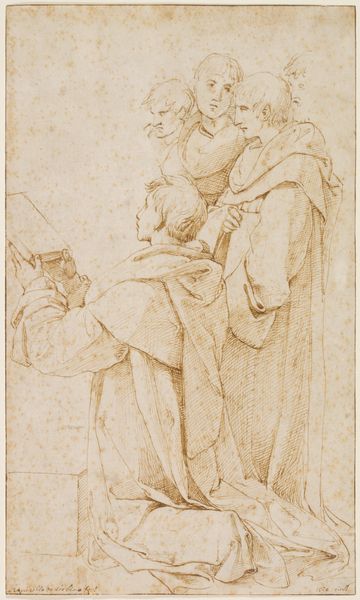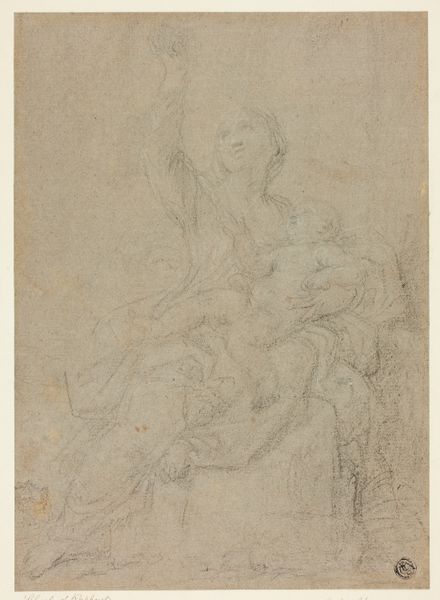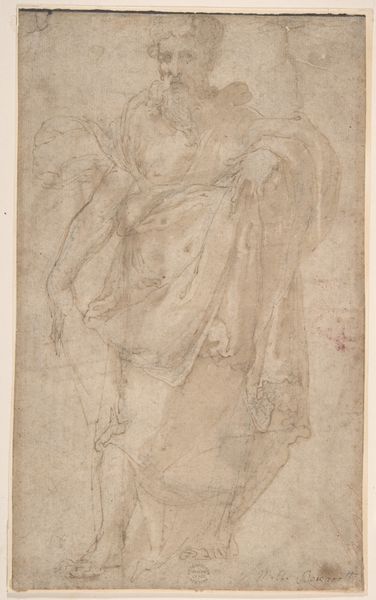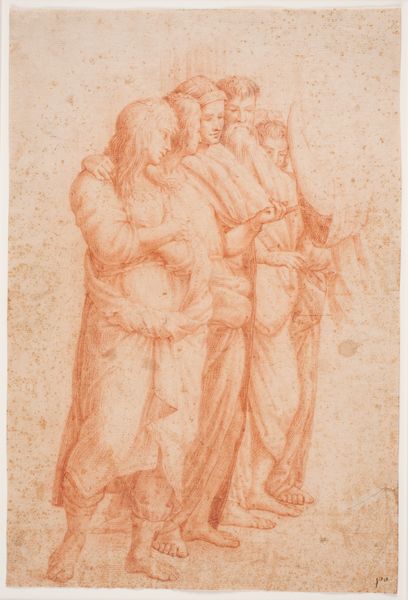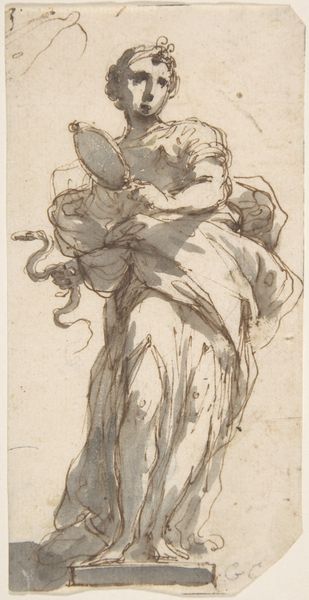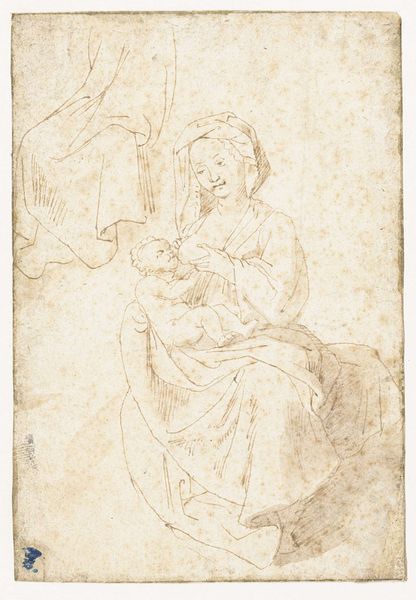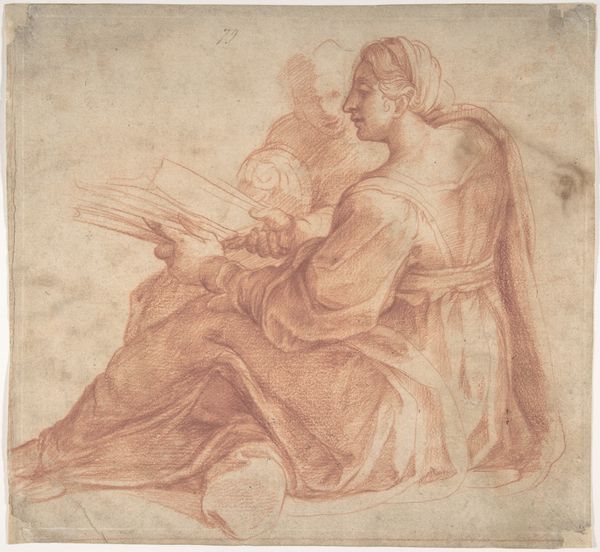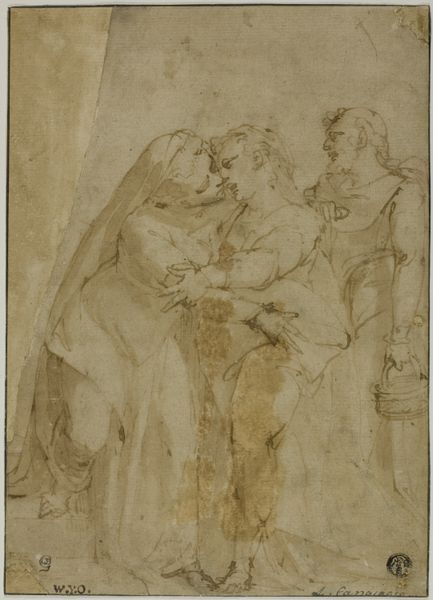
Woman and Child Kneeling (recto); Head of Child (verso) 1500 - 1600
0:00
0:00
drawing, paper, pencil, charcoal
#
portrait
#
drawing
#
charcoal drawing
#
figuration
#
paper
#
child
#
pencil
#
line
#
charcoal
#
history-painting
#
italian-renaissance
Dimensions: 6-1/2 x 5-1/8 in. (16.5 x 13.0 cm)
Copyright: Public Domain
Editor: So here we have "Woman and Child Kneeling" – and on the back, a study, "Head of Child" – by Andrea del Sarto, dating from sometime between 1500 and 1600. It’s a charcoal drawing on paper. It feels intimate, almost like a fleeting glimpse of motherhood. What catches your eye when you look at this drawing? Curator: Ah, intimacy, yes. That’s it, isn't it? These aren’t posed figures; they are caught in a moment, the child clinging, the woman… well, she's almost a mountain range, isn’t she? Solid, sheltering. You know, when I look at a drawing like this, I think of all the charcoal dust dancing in del Sarto's studio. Each line a breath, a decision, a tiny whispered conversation between the artist and the paper. Do you feel that connection with the artist when you view the piece? Editor: Definitely! I feel like I am intruding on a private moment. It also has an unfinished quality, right? Like it is more about the process of observation than a polished final artwork. Curator: Precisely! And that's where the magic lies, I think. The "unfinishedness" lets us, the viewers, complete the story. We bring our own mothers, our own childhood memories, into the frame. It transforms from del Sarto’s sketch to *our* experience. It makes you wonder about their story, doesn't it? A sort of ‘choose your own adventure’ into Renaissance family life, perhaps. Editor: That’s such a lovely way to look at it. I guess it also highlights the importance of drawings, not just as studies, but as artworks in their own right. Curator: Exactly. It is a tender little artifact filled with a lifetime of connection. What could be better than that?
Comments
No comments
Be the first to comment and join the conversation on the ultimate creative platform.
